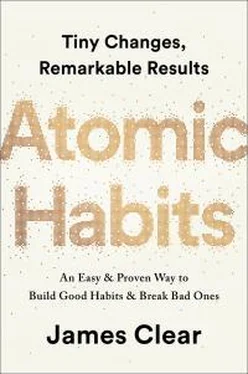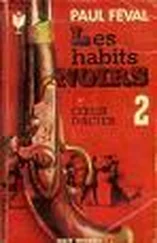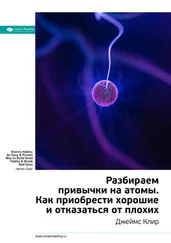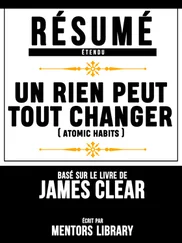It’s not just athletes, either. When comedian Chris Rock is preparing fresh material, he will first appear at small nightclubs dozens of times and test hundreds of jokes. He brings a notepad on stage and records which bits go over well and where he needs to make adjustments. The few killer lines that survive will form the backbone of his new show.
I know of executives and investors who keep a “decision journal” in which they record the major decisions they make each week, why they made them, and what they expect the outcome to be. They review their choices at the end of each month or year to see where they were correct and where they went wrong.*
Improvement is not just about learning habits, it’s also about fine-tuning them. Reflection and review ensures that you spend your time on the right things and make course corrections whenever necessary—like Pat Riley adjusting the effort of his players on a nightly basis. You don’t want to keep practicing a habit if it becomes ineffective.
Personally, I employ two primary modes of reflection and review. Each December, I perform an Annual Review , in which I reflect on the previous year. I tally my habits for the year by counting up how many articles I published, how many workouts I put in, how many new places I visited, and more.* Then, I reflect on my progress (or lack thereof) by answering three questions:
What went well this year?
What didn’t go so well this year?
What did I learn?
Six months later, when summer rolls around, I conduct an Integrity Report . Like everyone, I make a lot of mistakes. My Integrity Report helps me realize where I went wrong and motivates me to get back on course. I use it as a time to revisit my core values and consider whether I have been living in accordance with them. This is when I reflect on my identity and how I can work toward being the type of person I wish to become.*
My yearly Integrity Report answers three questions:
What are the core values that drive my life and work?
How am I living and working with integrity right now?
How can I set a higher standard in the future?
These two reports don’t take very long—just a few hours per year—but they are crucial periods of refinement. They prevent the gradual slide that happens when I don’t pay close attention. They provide an annual reminder to revisit my desired identity and consider how my habits are helping me become the type of person I wish to be. They indicate when I should upgrade my habits and take on new challenges and when I should dial my efforts back and focus on the fundamentals.
Reflection can also bring a sense of perspective. Daily habits are powerful because of how they compound, but worrying too much about every daily choice is like looking at yourself in the mirror from an inch away. You can see every imperfection and lose sight of the bigger picture. There is too much feedback. Conversely, never reviewing your habits is like never looking in the mirror. You aren’t aware of easily fixable flaws—a spot on your shirt, a bit of food in your teeth. There is too little feedback. Periodic reflection and review is like viewing yourself in the mirror from a conversational distance. You can see the important changes you should make without losing sight of the bigger picture. You want to view the entire mountain range, not obsess over each peak and valley.
Finally, reflection and review offers an ideal time to revisit one of the most important aspects of behavior change: identity.
HOW TO BREAK THE BELIEFS THAT HOLD YOU BACK
In the beginning, repeating a habit is essential to build up evidence of your desired identity. As you latch on to that new identity, however, those same beliefs can hold you back from the next level of growth. When working against you, your identity creates a kind of “pride” that encourages you to deny your weak spots and prevents you from truly growing. This is one of the greatest downsides of building habits.
The more sacred an idea is to us—that is, the more deeply it is tied to our identity—the more strongly we will defend it against criticism. You see this in every industry. The schoolteacher who ignores innovative teaching methods and sticks with her tried-and-true lesson plans. The veteran manager who is committed to doing things “his way.” The surgeon who dismisses the ideas of her younger colleagues. The band who produces a mind-blowing first album and then gets stuck in a rut. The tighter we cling to an identity, the harder it becomes to grow beyond it.
One solution is to avoid making any single aspect of your identity an overwhelming portion of who you are. In the words of investor Paul Graham, “keep your identity small.” The more you let a single belief define you, the less capable you are of adapting when life challenges you. If you tie everything up in being the point guard or the partner at the firm or whatever else, then the loss of that facet of your life will wreck you. If you’re a vegan and then develop a health condition that forces you to change your diet, you’ll have an identity crisis on your hands. When you cling too tightly to one identity, you become brittle. Lose that one thing and you lose yourself.
For most of my young life, being an athlete was a major part of my identity. After my baseball career ended, I struggled to find myself. When you spend your whole life defining yourself in one way and that disappears, who are you now?
Military veterans and former entrepreneurs report similar feelings. If your identity is wrapped up in a belief like “I’m a great soldier,” what happens when your period of service ends? For many business owners, their identity is something along the lines of “I’m the CEO” or “I’m the founder.” If you have spent every waking moment working on your business, how will you feel after you sell the company?
The key to mitigating these losses of identity is to redefine yourself such that you get to keep important aspects of your identity even if your particular role changes.
“I’m an athlete” becomes “I’m the type of person who is mentally tough and loves a physical challenge.”
“I’m a great soldier” transforms into “I’m the type of person who is disciplined, reliable, and great on a team.”
“I’m the CEO” translates to “I’m the type of person who builds and creates things.”
When chosen effectively, an identity can be flexible rather than brittle. Like water flowing around an obstacle, your identity works with the changing circumstances rather than against them.
The following quote from the Tao Te Ching encapsulates the ideas perfectly:
Men are born soft and supple;
dead, they are stiff and hard.
Plants are born tender and pliant;
dead, they are brittle and dry.
Thus whoever is stiff and inflexible
is a disciple of death.
Whoever is soft and yielding
is a disciple of life.
The hard and stiff will be broken.
The soft and supple will prevail.
—LAO TZU
Habits deliver numerous benefits, but the downside is that they can lock us into our previous patterns of thinking and acting—even when the world is shifting around us. Everything is impermanent. Life is constantly changing, so you need to periodically check in to see if your old habits and beliefs are still serving you.
A lack of self-awareness is poison. Reflection and review is the antidote.
Chapter Summary
The upside of habits is that we can do things without thinking. The downside is that we stop paying attention to little errors.
Habits + Deliberate Practice = Mastery
Reflection and review is a process that allows you to remain conscious of your performance over time.
Читать дальше




![Джеймс Клир - Атомные привычки [Как приобрести хорошие привычки и избавиться от плохих]](/books/403243/dzhejms-klir-atomnye-privychki-kak-priobresti-horosh-thumb.webp)



